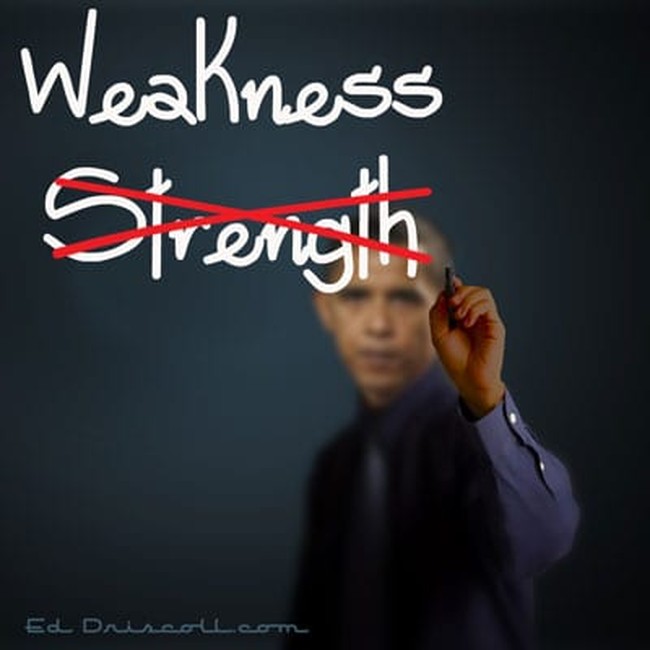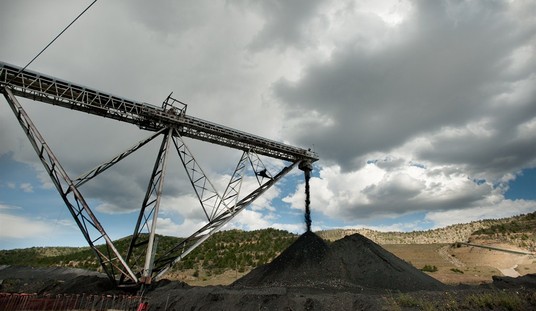
When President Barack Obama delivers his State of the Union speech on Tuesday, he will surely contend — as he did in 2013, 2012, 2011, and 2010 — that “our union” is “stronger,” “getting stronger,” or at least “strong.”
It is no such thing.
The federal government is certainly weaker, and the situation continues to worsen. The five highest annual deficits the nation has ever incurred have been on Obama’s watch. Barring a significant improvement in the economy — unlikely, as will be seen — the sixth highest will occur when the current fiscal year ends on September 30. The national debt, at $17.27 trillion as of January 22, has increased by a jaw-dropping $6.6 trillion since he was first inaugurated. That this year’s deficit will be less than half of the official $1.4 trillion recorded in fiscal 2009 means, in his mind, that we can ramp up spending again. Outlays for the federal government’s operations plus interest are on track to remain above $3.5 trillion this year. That’s a ridiculous 30 percent above fiscal 2007, and virtually unchanged from fiscal 2009, when the so-called stimulus package was sold as a largely temporary spending ramp-up.
In his 2012 speech, Obama admitted that “the recovery is still fragile.” Two years later, in most of the U.S., it still hasn’t happened.
Yes, the overall economy finally got its real gross domestic product (GDP) back above where it was at the end of 2007 during the second quarter of 2011, the eighth quarter after the recession’s official June 2009 end. No other post-World War II recovery required more than three. It even met Warren Buffett’s benchmark for determining the recession’s end, namely “when real per capita GDP gets back up to where it was before,” in the second quarter of last year. The problem is, it took 22 quarters for that to happen, twice as long as after any other post-World War II comeback.
Unfortunately, the economy’s GDP recovery is still very slight, very unevenly spread geographically, and far less important than its failure to regain pre-recession employment levels in the vast majority of the nation.
In its recently released 2013 County Tracker based on late 2013 data, the National Association of Counties (NACo) echoed Obama’s early 2012 statement. Noting that the “recovery is still fragile in some parts of the country,”the NACo report described a still dismal situation:
About half of U.S. county economies had no recession or recovered their economic output (GDP) lost during the recession by 2013, most of them in the South. About 800 county economies, mostly in the South and Midwest, had no drops in employment over the last decade or were above their pre-recession levels in 2013.
Which tells us that roughly half of all U.S. counties have failed to return to their previous GDP over four years after the recession officially ended. Clearly, far more than half have failed to get back to their previous levels of per capita GDP.
Given that the U.S. has 3,069 counties (Connecticut and Rhode Island, which are two of the country’s worst economic basket cases, don’t have county governments), that paragraph’s second statement is much more troubling. Only about 26 percent of them (800 divided by 3,069) have returned to or exceeded their previous employment levels. In other words, almost three-fourths haven’t.

The above National Association of Counties map shows us that 15 states have seen fewer than 20 percent of their counties achieve employment recovery, and that four of those have failed to get to even 10 percent.
Given this situation, it shouldn’t surprise anyone that the former Census Bureau employees who now run Sentier Research reported last week that real median household income hasn’t budged in two years, and is stuck at over 7 percent below its early 2008 peak.
The situation would be even worse but for the fact that many states have improved their economies by doing the opposite of what the Obama administration has been doing and advocating. One example: States which have been right to work during all of the past seven years are far closer to recovering the jobs lost since peak employment (within 0.78 percent) than non-right to work states (1.71 percent shy). Indeed, 650,000 more Americans would have jobs today if the rest of the nation had matched the performance of the right to work states.
So what will Obama suggest to get the country back on track? Nothing which has a realistic chance of accomplishing anything.
More spending and stimulus, which might as well be the only page in the left’s and the Fed’s (but I’m probably repeating myself) macroeconomic play books, haven’t been the answers for the past five years. Why does any sane person believe they will somehow get us over the hump now?
An Obama-supported raise in the minimum wage to $10.10 will only throw more people, perhaps as many as 1 million, into unemployment lines while preventing new entries into the workforce – all at a time when labor force participation is at a 35-year low. Someone needs to tell Obama that retailers are already laying off employees in droves following a disappointing Christmas shopping season.
No one has to recite any of the statistics noted above to the U.S. Chamber of Commerce and its friends in Washington. They know, and they obviously don’t care. If they did, they wouldn’t be pushing mightily to make 2014 their make-or-break year to pass economically ruinous illegal-immigrant amnesty. But to their eternal shame, they are.
Throw the ongoing and deepening confusion and chaos of Obamacare and the administration’s apparent nonchalant attitude as it crumbles into the mix, and the one thing you don’t have is a recipe for the economy to have anything resembling a strong year.
It’s impossible to know, but it may be that the stock market has finally caught on to what should have been obvious all along, as it shed about 3 percent of its value in last week’s final two days. One thing we do know is what CNBC’s Rick Santelli stated Friday afternoon: government and central bank strategies based on endless stimulus and artificial money creation “can’t go on forever.”








Join the conversation as a VIP Member